Fabric Formwork for Concrete Construction
The Constructor
JUNE 20, 2021
Fabric formwork is a building technology that employs geotextile fabrics as the formwork material for concrete construction. In general, fabric.
This site uses cookies to improve your experience. To help us insure we adhere to various privacy regulations, please select your country/region of residence. If you do not select a country, we will assume you are from the United States. Select your Cookie Settings or view our Privacy Policy and Terms of Use.
Cookies and similar technologies are used on this website for proper function of the website, for tracking performance analytics and for marketing purposes. We and some of our third-party providers may use cookie data for various purposes. Please review the cookie settings below and choose your preference.
Used for the proper function of the website
Used for monitoring website traffic and interactions
Cookies and similar technologies are used on this website for proper function of the website, for tracking performance analytics and for marketing purposes. We and some of our third-party providers may use cookie data for various purposes. Please review the cookie settings below and choose your preference.
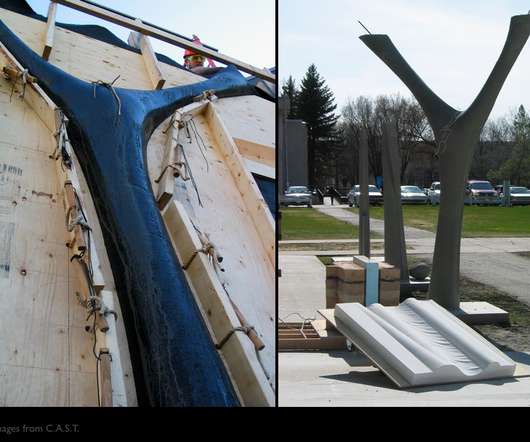
The Constructor
JUNE 20, 2021
Fabric formwork is a building technology that employs geotextile fabrics as the formwork material for concrete construction. In general, fabric.

The Constructor
APRIL 18, 2025
Smart textiles for buildings represent a bold leap forward in construction materialswhere fiber technology meets structural engineering to create lightweight, high-performance fabric systems that rival concrete and steel.
This site is protected by reCAPTCHA and the Google Privacy Policy and Terms of Service apply.

Construction Marketing
MAY 27, 2022
Since fabric buildings are tensile structures, the membrane can be pulled into a three-dimensional surface for developing shading, a roof, or a decorative component. Simply put, they’re a building made of all-steel frames and tarp covers or fabric material. Read on to learn about the advantages of fabric buildings.

The Constructor
FEBRUARY 27, 2019
Welded wire fabric is the series of parallel longitudinal wires welded to cross wires by electric fusion method having accurate spacing. the welding.
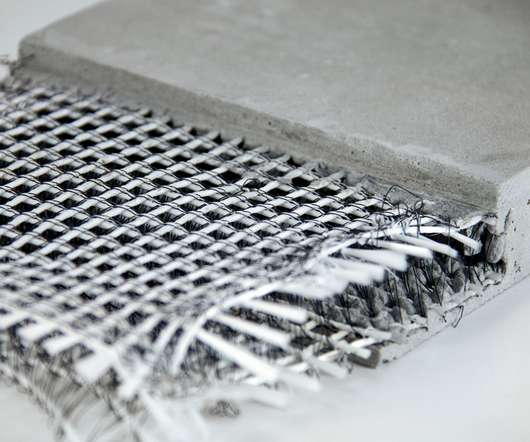
The Constructor
NOVEMBER 13, 2020
Textile-reinforced concrete (TRC) or fabric-reinforced cementitious matrix (FRCM) is a composite concrete material that employs textile reinforcement.

The Constructor
APRIL 10, 2017
Concrete Cloth is flexible cement impregnated fabric. Process of making concrete cloth, properties, materials and applications in construction is.

The Constructor
NOVEMBER 21, 2011
Both the rate and degree of hydration, and the resulting strength of the final concrete, depend on the curing process that follows placing and consolidating the plastic concrete. This reaction, called hydration, produces a stone-like substance—the hardened cement paste.
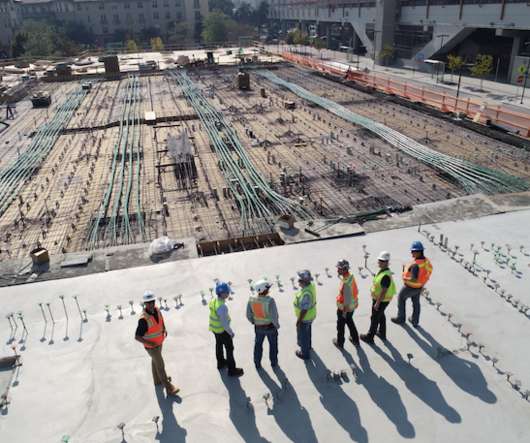
Construction Marketing
JULY 14, 2022
There are several different options including concrete, metal, and fabric. Concrete buildings can withstand more environmental wear over time, while metal buildings are low on maintenance, and fabric buildings can be put up and taken down easily. . For concrete, you’ll need to clean, inspect, and repair cracks as needed.

BD+C
APRIL 23, 2013
Milliken recently debuted a flexible fabric that allows for concrete installations on slopes, in water, and in other hard to reach places—without the need for molds or mixing. Concrete Cloth features a cement mix trapped in a layer of fabric, backed with a waterproof membrane.

The Constructor
MARCH 19, 2012
Thicker plywood may be used when the weight of concrete causes a standard thickness plywood to bow out, distorting the concrete face. Steel: Steel is also used in pre-fabricated formwork. Purpose made steel forms are fabricated when dimensional tolerances are critical, or when the forms are planned to be re-used.

Construction Marketing
JANUARY 16, 2023
In Cement And Concrete Mixes. Adding PVA to cement and concrete mixers helps create a strong bond between particles. As a result, your product can enhance your building’s strength or similar projects like roads or concrete columns. . When you use PVA in textiles, it helps improve the strength and durability of your fabrics.

The Constructor
FEBRUARY 4, 2017
Rebaring technique in reinforced concrete construction is a method for proper fabrication and placement of reinforcement bars as per the design and.

The Constructor
NOVEMBER 7, 2011
Encase the beams by concrete. The beams connecting these columns were encased with 75mm thick micro concrete. Provide 8m long structural steal beam below the existing beam. But this option was rejected as the steel beam was affecting the head room in the floor. This option was also affecting the head room and was too costly.

The Constructor
MARCH 19, 2012
When concrete is fresh and in its liquid state it must be restrained within a mould in order for it to set in its required shape. A smooth outer surface provides the main support for the concrete as it sets. Concrete is approximately 2.4 Formwork is the term used to describe this mould. This is normally made of plywood.

The Constructor
NOVEMBER 19, 2011
2) poor communication between the fabricators and erectors. (3) The most common causes of structural failures are: (1) Poor communication between the various design professionals involved, e.g. engineers involved in conceptual design and those involved in the supervision of execution of works. (2)

The Constructor
NOVEMBER 11, 2011
The displacement can be computed as ……………. (1) In such cases, applying the principle of virtual work, ………………….2(a) 2(a) Where, = change in length of member k, = change in thermal expansion of member K = change in temperature.

The Constructor
AUGUST 23, 2012
These fixings generally take the form of concrete nibs or metal (usually stainless steel) angles. Restraint fixings are designed to hold panels back and transfer all horizontal forces (such as wind pressure or suction) to the structure.

Viewpoint Construction Technology
MAY 8, 2018
Architects are looking to wood—specifically cross-laminated timber—as an alternative to steel and concrete for high-rise buildings. Concrete, on the other hand, has a high carbon footprint since creating it requires a lot of energy. The Bullitt Center in Seattle , for example, is made largely from timber on a concrete base.
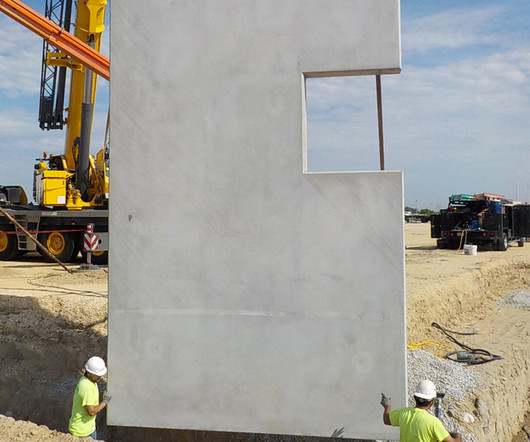
HardHatChat
MARCH 27, 2018
Prefabricated elements such as pre-cast concrete walls, which Englewood installed for a Blain’s Farm & Fleet store in Romeoville, Ill., Not all that long ago, when I was still a young laborer in the field, many items such as millwork, ductwork and mechanical components were still frequently fabricated on the job site.

GCP Applied Technologies
FEBRUARY 20, 2020
Concrete calculator. The STRUX® calculator recommends correct dosage rates, for STRUX® 90/40 macro synthetic fibers , as a steel welded wire mesh (WWM) replacement in concrete installations. Concrete admixtures. concrete admixture strux app icon blog hero. Concrete calculator for macro synthetic fibers. Architects.
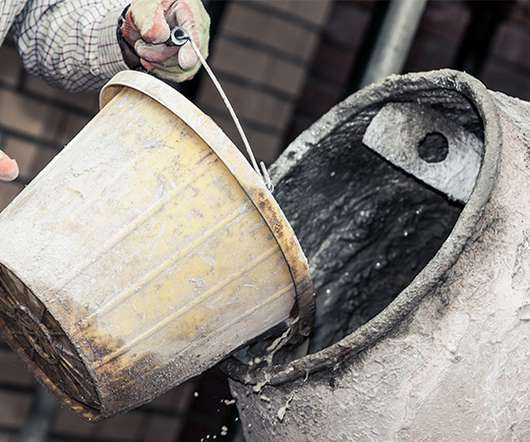
GCP Applied Technologies
MARCH 6, 2020
Concrete mix design. concrete / mix design. . Control flow concrete. Control flow concrete. Of all the enhancements we can make to concrete through the proper use of admixtures, entrainment of air is the most difficult. Control flow concrete. michael.delros…. Fri, 03/06/2020 - 18:13. March 06, 2020.
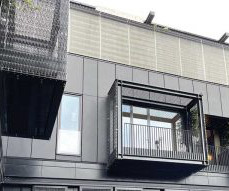
Construction Specifier
JULY 27, 2023
Photos courtesy GKD Metal Fabrics. Polyvinyl chloride (PVC) products will turn yellow in sunlight and become brittle, while porous concrete will stain, crack, and spall. Metal fabric presents a flexible, elegant design option that is also extremely durable—which is an ideal combination for activating a rooftop environment.

BIM & Beam
AUGUST 1, 2018
This is the third blog post in a series that discusses the advantages of working on concrete projects in a BIM process for structural engineers. Take, for example, a precast concrete wall. Segmentation is dictated by engineering, architectural, or fabrication requirements, and its reinforcement is determined by the structural engineer.

BIM & Beam
JUNE 24, 2014
Now in Autodesk Revit 2015 you can place single instances of fabric sheets to precisely reinforce sections of concrete walls, floors or slab foundations.'
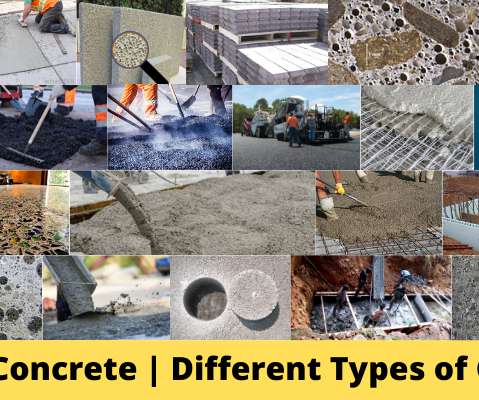
CivilJungle
APRIL 26, 2020
What Is Concrete? Concrete is the final product resulting from mixing cement , aggregates (including sand), water, and mixtures. The first use of concrete was by the Roman Empire. The Pantheon is the largest unreinforced concrete dome in the world, built-in 120 A.D. Different Types of Concrete. Dry lean Concrete.
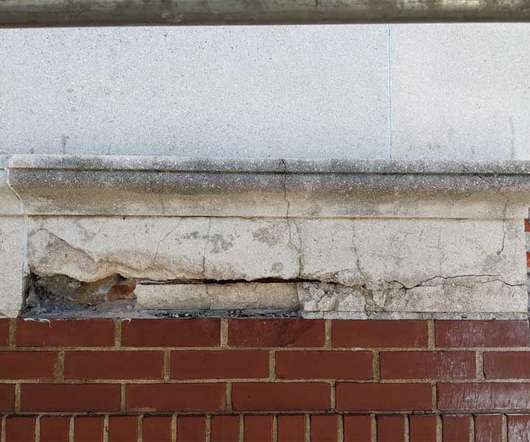
Construction Specifier
DECEMBER 6, 2021
Although sometimes characterized as stone, cast stone is in fact a highly refined architectural precast concrete. Cast stone became popular in the United States and Canada in the late 19 th century, with the rapid development of the Portland cement and concrete industries. Cleaning should use the gentlest approach possible.

BD+C
FEBRUARY 8, 2018
Engineered as an alternative to traditional building core construction methods, such as cast-in-place concrete, precast concrete, and masonry, this patented, steel-and-concrete hybrid system can simplify and accelerate the construction of reinforced concrete stair and elevator core structures.

Pro Builder
SEPTEMBER 3, 2020
Pay attention to these details to properly waterproof site-fabricated shower pans. As with any shower, leaks are most common at the pan; in the case of a custom shower, the pan tends to be fabricated on site and finished with ceramic tile or a similar hard-surface material. . Tiling Over Concrete. Thu, 09/03/2020 - 10:37.

GCP Applied Technologies
FEBRUARY 18, 2021
When it comes to waterproofing horizontal decking applications such as concrete balconies and covered roofs, there are a number of options available. When it comes to waterproofing horizontal decking applications such as concrete balconies and covered roofs, there are a number of options available. February 18, 2021.

BIM & Beam
OCTOBER 16, 2014
I would like to start a series of tutorials to help you get started with reinforced concrete structures in Autodesk Revit. Autodesk Revit software provides tools for modeling 3D concrete reinforcement in an advanced Building Information Modeling (BIM) environment. Open … Concrete Frame.rvt file.

Job Order Contracting
AUGUST 4, 2023
m (4 inches) thick slab, vapour barrier and welded wire fabric in Baton Rouge, Louisiana, United States, c oncrete was found to be underestimated by 18% and vapour barrier by as much as 67%. For example, Estes (2016) found that for a slab-on-grade foundation assembly with 0.1 Additionally, assembly costs for 0.1

BD+C
OCTOBER 28, 2024
A case for mid-rise: How multifamily housing can reshape our cities 0 qpurcell Mon, 10/28/2024 - 11:01 Multifamily Housing Often referred to as “five-over-ones,” the mid-rise apartment type is typically comprised of five stories of apartments on top of a concrete “podium” of ground-floor retail. in recent years. At the end of 2020, the U.S.
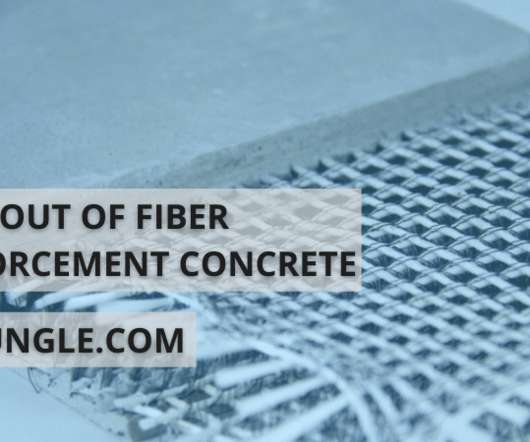
CivilJungle
MAY 19, 2021
Fiber Reinforcement Concrete. Fiber Reinforcement Concrete is a composite material that consists of mixtures of cement , concrete , and randomly distributed fibers. Properties of Fiber Reinforcement Concrete. The properties of fiber-reinforced concrete are as follows. times concerning reinforced concrete.

ENR Construction
SEPTEMBER 18, 2012
Acciona Windpower has completed fabrication of the first section of a 100-meter high concrete tower for a wind farm in Iowa.

BIM & Beam
APRIL 11, 2018
Having a more accurately defined design model in Revit also enables a better interoperability with Advance steel for steel detailing and fabrication. This streamlines work processes by enabling better collaboration between structural engineers, connection engineers, detailers and fabricators in different locations.

PC Construction
AUGUST 22, 2024
Selective demolition is underway, with a focus on recycling or reusing 100% of the metal and concrete waste. Upon completion of this first phase next year, The Metro will house offices, multipurpose rooms, community gathering and assembly spaces, numerous tenant spaces, and a 15,000-square-foot fabrication center.
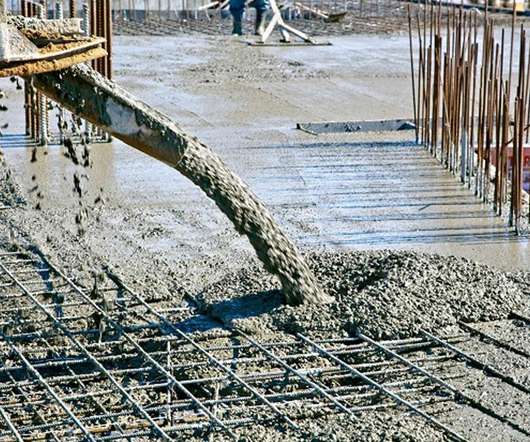
Construction Cost Estimating
AUGUST 31, 2020
Numerous individuals imagine that cement and concrete are a similar item – they are definitely not. Then again, concrete is a blend of cement mixed with water and different sizes of aggregates. Concrete, in its newly blended state, is a plastic serviceable blend that can be framed into practically any alluring shape.

Construction Cost Estimating
DECEMBER 20, 2018
While designing the reinforced concrete members, it is necessary to check the steel reinforcement in jobsite prior to arrange concrete. Besides, ensure the concrete foundations, beams, columns, etc. Often, it is observed that steel beam stirrups employed in reinforced concrete design, are not installed properly.
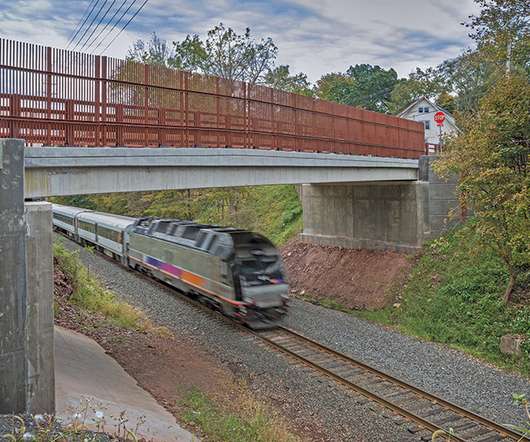
ENR Construction
NOVEMBER 16, 2021
Sustainability, history, quality and safety were themes throughout the process of replacing a deteriorated timber-decked bridge above a NJ Transit rail line with a high-strength prestressed single-span concrete box beam superstructure fabricated off site to help expedite construction.

BIM & Beam
OCTOBER 13, 2017
This article is the continuation of a conversation that I started with the blog post depicting the value of BIM for Concrete and continued with from 2D to 3D with rebar detailing. There are several enablers helping rebar detailers be successful and deliver clean and precise instructions for rebar fabricators and installers.
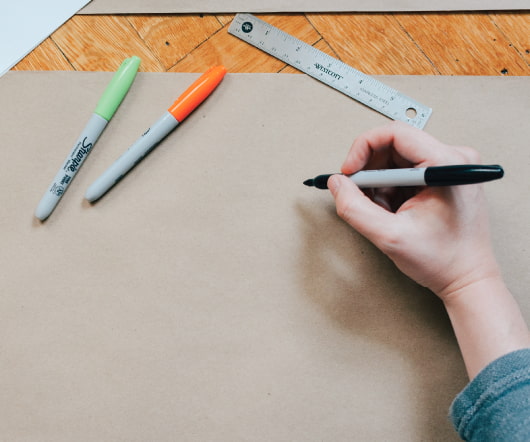
Construction Cost Estimating
JULY 27, 2016
If concrete or masonry structures contain inadequate strength, externally bonded reinforcement provides good solution. Fabric-reinforced cementitious matrix (FRCM) systems are gaining popularity as a feasible substitute to FRP systems. Both hydraulic and non-hydraulic cements are applied.

Construction Marketing
MAY 26, 2021
They are cheaper but almost five times stronger than wood or concrete. They also termite-resistant, do not rot like wood, or crack like concrete. Steel and aluminum stairs are fabricated as parts that can be assembled on site. They may even be coated with fire-proof paint to ensure that they can withstand heat and fire damage.

Work Gearz
NOVEMBER 17, 2021
Walking on concrete floors without wearing protective and comfortable shoes and socks is responsible too. Although concrete floors have many advantages in general, they’re also responsible for causing Plantar fasciitis. Yes, walking on concrete floors causes Plantar fasciitis. Are Vibram Soles Good on Concrete? ).
Expert insights. Personalized for you.
We have resent the email to
Are you sure you want to cancel your subscriptions?


Let's personalize your content